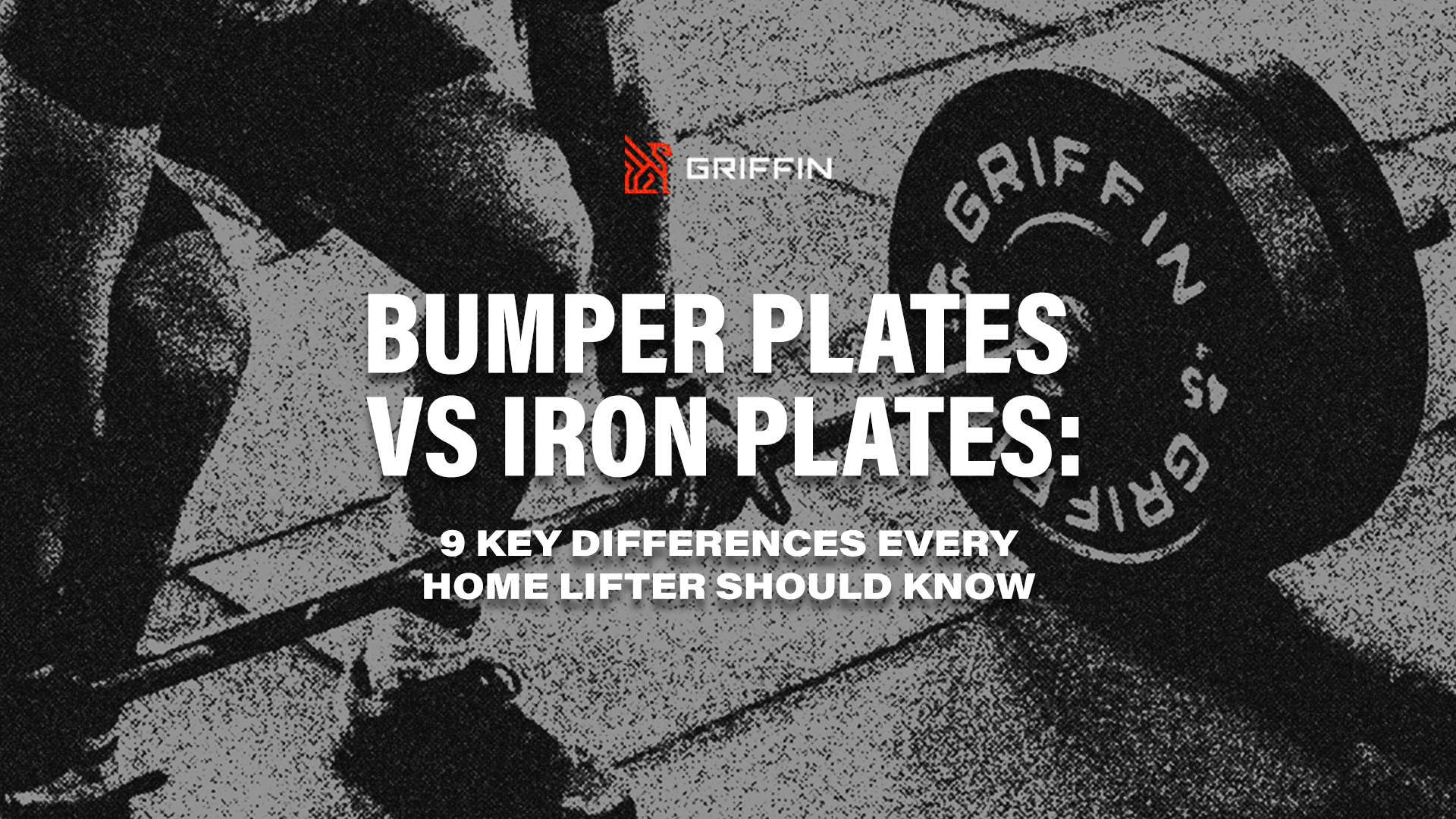Setting up your home gym means making a few choices that can shape how—and where—you train. One of the biggest: which kind of plates should you invest in?
You’ve probably seen the debate online: bumper plates vs iron plates. But instead of opinions, here’s a straightforward breakdown of the differences that actually matter, especially for home setups.
1. Bumper Plates Can Be Dropped—Iron Plates Shouldn’t Be
This is the biggest difference right out of the gate.
Bumper plates are made from high-density rubber, built to be dropped safely from overhead. Whether you’re doing snatches, clean and jerks, or high-volume deadlifts, you don’t need to worry about cracking a plate—or your floor.
Iron plates, on the other hand, are much less forgiving. Dropping them can mean chips, cracks, or worse. They’re great for controlled lifting, but not for anything explosive.
2. Iron Plates Take Up Less Space on the Bar
Because all bumper plates have the same diameter (450mm), even the lighter ones are full-sized. This helps with technique, but it also eats up sleeve space fast.
Iron plates vary in diameter by weight, so you can stack more on the bar—making them better suited for ultra-heavy lifts like rack pulls or static squats.
If you’re limited on sleeve length and regularly move over 400 lbs, this matters.
3. Bumper Plates Are Quieter and Floor-Friendly
Iron clangs. Loudly.
If your gym shares a wall with a bedroom—or you’re lifting in a garage attached to your house—noise control matters. Bumper plates land with a dull thud, not a sharp ring.
They also help protect your barbell and floor, especially if you’re lifting on concrete or thin mats.
4. Iron Plates Are Typically Cheaper
Price per pound? Iron usually wins.
But there’s a caveat: bumpers often cost more because they’re built for more abuse. They can be dropped, dragged, and used on all kinds of surfaces. In the long run, if you’re replacing fewer damaged plates, the value tends to balance out.
Think long-term. Think about what kind of training you’ll actually do.
5. Bumper Plates Are Beginner-Friendly
This one’s often overlooked.
When you’re just learning deadlifts or cleans, having the bar start at the correct height matters. Since all bumpers have the same diameter, even a bar loaded with 10s sits at the right spot for proper form.
With iron plates, using lighter weights means the bar starts lower—harder on the back, and harder to learn from.
6. Iron Plates Have a Classic Look and Feel
There’s something undeniably old-school about the sound and feel of iron plates. They’re part of lifting culture.
If you’re into powerlifting or prefer a stripped-down, raw aesthetic, iron plates scratch that itch.
But if your focus is function, and you don’t mind a modern look, bumpers tend to be cleaner, quieter, and more versatile.
7. Bumper Plates Are More Versatile for Mixed Training
If your workouts mix barbell lifts, circuits, and conditioning work, bumpers shine. You can:
- Drop them mid-WOD
- Roll them into loaded carries
- Superset heavy lifts with movement-based drills
They’re built to take a beating. Iron plates? Not so much.
8. Bumper Plates Help Preserve Your Barbell
Repeated impact with iron plates can damage the barbell’s sleeves over time—especially if you’re not using collars or if the plates shift during lifts.
The softer edge of bumper plates reduces wear and tear, making them a smarter pairing with premium barbells.
9. Hybrid Setups Offer the Best of Both Worlds
Here’s the truth: you don’t need to choose one or the other. Many lifters combine both.
Use bumper plates for:
- Deadlifts
- Olympic lifts
- Dynamic workouts
Use iron plates to:
- Load extra weight when space matters
- Add smaller jumps (2.5, 5 lb increments)
- Get that raw lift feel on squats or bench
A good hybrid setup gives you versatility without compromise.
Final Thoughts: Which Should You Pick?
| Your Goal | Plate Recommendation |
|---|---|
| High-rep training or Olympic lifts | Bumper Plates |
| Heavy powerlifting or static lifts | Iron Plates |
| Training in a shared or sound-sensitive space | Bumper Plates |
| Limited bar sleeve space | Iron Plates |
| Best overall garage gym setup | Start with bumpers, add iron later |
Recommended Griffin Gear for Plate Training
Once you’ve chosen your plates, make sure your rack and barbell can handle your setup. Here’s what we suggest:
- GR3 Power Rack – Built for serious lifters, with all the accessories you need
- Competition Bumper Plates – Dead-bounce rubber, precision calibrated
- Griffin Bar 2.0 – Our flagship bar for all-around performance
These pieces grow with you as your training evolves—whether you’re just starting out or chasing PRs.
